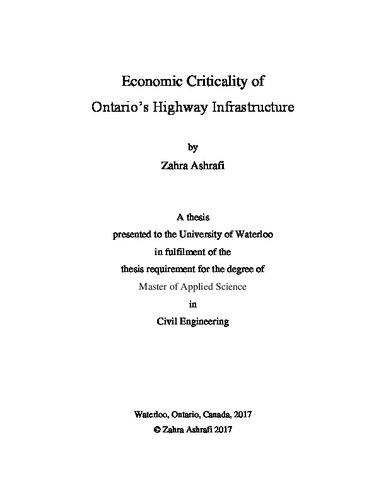| dc.description.abstract | Ontario is the economic center of Canada and hence generates a significant amount of freight activity. Moving forward, population growth coupled with growing and diverse trade strategies are likely to place new and increased demands on Ontario’s aging infrastructure. Since Ontario shippers and carriers rely on the mobility and accessibility provided by transportation systems, any restrictions or disruptions can have detrimental outcomes not only for the Province’s economy but also for the economy of Canada as a whole. Events that disable parts of the highway transportation network, ranging from weather conditions to construction closures, may affect freight travel times and ultimately threaten economic productivity. While previous studies of criticality typically focus on the impacts of natural disasters or terrorist attacks on system-wide travel times, they have not quantified the costs associated with disruptions to the economy via the freight transportation system.
This research quantifies the economic criticality of highway infrastructure in Ontario, Canada, using a new measure of criticality that determines the cost of highway closures in dollar values ($) based on the value of goods, the time delayed, and the associated value of time. Measured this way, criticality is correlated with truck volumes, but differs by considering the values of shipments and network redundancy, resulting in new insights to critical freight infrastructure. For example, due to the high redundancy of the highway network within the Greater Toronto Area (GTA), highways become more critical further away. Moreover, sections of Highway 401 located west of the GTA are found to be more critical than those located east of the GTA because of lower redundancy in the western portion of the network, despite carrying lower truck volumes. Finally, with the cost of these disruptions quantified in dollars, one can then calculate the monetary benefits of potential transportation improvements for comparison (i.e., cost-benefit analysis). | en |

